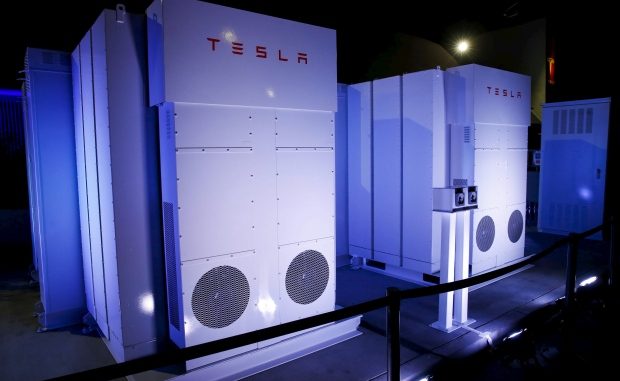
Tesla CEO, Elon Musk has launched a new range of battery technology for homes and buildings that could cut energy costs dramatically, while being environmentally clean.
The CEO of Tesla Motors has created a new division of his company called Tesla Energy. The visionary entrepreneur is bringing the success of his electric car company’s battery technology to people’s homes.

BYPASS THE CENSORS
Sign up to get unfiltered news delivered straight to your inbox.
You can unsubscribe any time. By subscribing you agree to our Terms of Use
Latest Video
He plans to change the shape of the power grid with his range of rechargeable power plants, using solar panels and cheap energy. Musk wants to build on his vision of a carbon free electricity grid, with the new power grids utilizing battery power based on Tesla’s open source patents.
This highlights the growing demand for minerals such as graphite, cobalt and lithium required to make the batteries.
Mining Weekly reports:
The Powerwall was a sleek looking, suitcase sized lithium-ion battery that had a 10 kWh capacity, was 100 kg in weight and would set consumers back $3 500. This 10 kWh model was designed to provide back-up power for an entire home, while a smaller 7 kWh design had been created for daily applications such as watching television, or powering lightbulbs and refrigerators, and would cost consumers only about $3 000.
London-based research house Benchmark Mineral Intelligence estimated that the Powerwall would require about 16 kg of synthetic graphite or 16 kg of spherical graphite derived from 40 kg of flake graphite concentrate. It would also consume on average 12 kg of lithium hydroxide in each unit.
One of the most interesting points about The Powerwall was its ease of scalability. Musk said it could be interconnected with up to eight other packs to give up to 90 kWh of capacity for a household. This principal held great potential, particularly when considering its commercial line of products, the Powerpack. “The Powerpack is designed to scale to infinity. You could literally make this into a gigawatt hour solution,” Musk said during the presentation in California.
Each Powerpack was the same design of battery as the Powerwall but with a capacity of 100 kWh – the largest ever battery pack Tesla has produced.
Tesla proved its design was more than a concept when it revealed the whole launch event was powered by Powerpack batteries on site that were charged by solar panels installed on the building’s roof. The company already had a commitment for a 250 MWh installation and was working with companies such as Amazon and Target for its new range of batteries for business.
No price was stated for the business products. BATTERY SOURCES Benchmark speculated in a commentary note that Tesla would probably still rely on its close partnership with Panasonic for its supply of lithium-ion batteries into 2016, while it transitions to Gigafactory output that was expected in the first few months of that year.

Benchmark explained that the Gigafactory would produce enough batteries at capacity to power 3.5-million homes. However, with 133-million housing units in the US alone, not even considering the number of vehicles produced that could be electric, that number seemed insignificant and bolstered Musk’s belief that the world will need multiple Gigafactories and not just the one Tesla was developing in Nevada. “There will need to be many Gigafactories in the future… The Tesla policy of open sourcing its patents will continue for the Gigafactory, Powerpack and all of our other products,” Musk said.
“It is a situation Benchmark has been tracking with six lithium-ion super-plants announced in the last year which are already under construction, the majority of which reside in China.
If even a fraction of Musk’s grand vision is realised, securing the raw material supply chains and the right specification of graphite, lithium and cobalt to make these batteries is now of paramount importance – not only for ethical reasons but for basic security of supply,” Benchmark analyst and MD Simon Moores said.
He added that Tesla had been the catalyst for a burgeoning battery-powered world, with it evolving into a battery company with car and utility storage divisions. “It will be interesting to see how the major auto and battery corporations react,” Moores noted.


